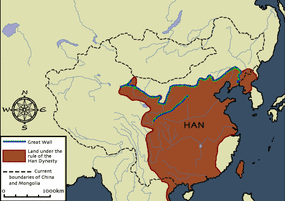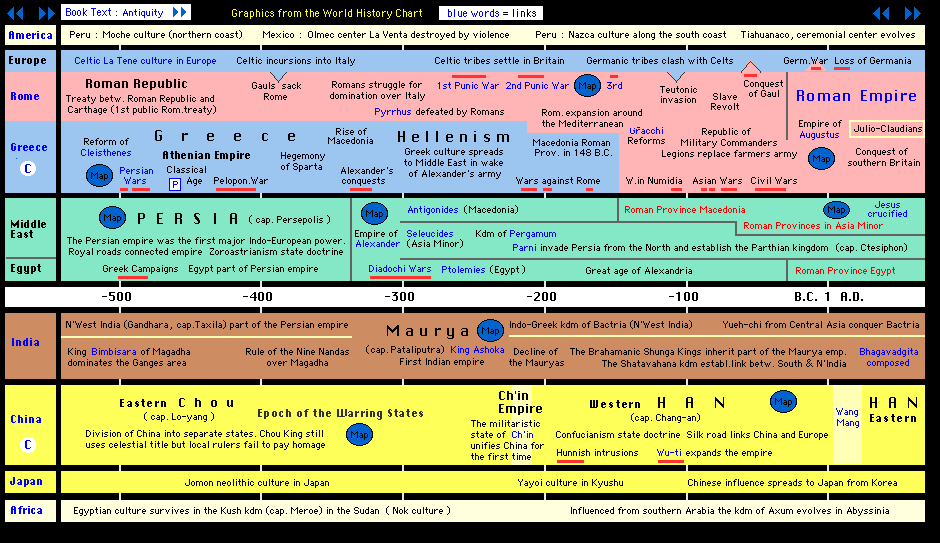Orchestration of China
2.2.2 by Mishka Wildemaan and Megan White
Basic Gist

Unlike other empires, China formed from restoring the old rather than creating the new. Chinese states emerged as early as 2200 B.C.E. under the Xia, Shang, and Zhou dynasties. Chinese civilizations crumbled around 500 B.C.E and went under a period of warring states. Many Chinese citizens found this unacceptable and turned to Qin Shihuangdi for the answer. Shihuangdi provided iron to the military, subordinated China's original aristocracy, and rapidly rising agricultural output (which caused a growing population). Shihuangdi adopted Legalism (see 2.2.2 Imperial Administrations) and began launching a military campaign to reunify China. Through a mere 10 years, these expeditions wiped out all other warring states. Shihuangdi stretched the Chinese Empire from north Vietnam, northeast Korea, and pushed nomads out of the northwest. In order to maintain his power and the empire's new land, Shihuangdi ordered thousands of laborers to form the Great Wall, which located on the northern border of the empire. Not only was the Great Wall used to keep out barbarians, but it was also used as a monumental mausoleum as Shihuangdi's final resting place. However, the Qin Dynasty did not last long due to its brutality and speed and soon collapsed in 206 B.C.E. Following the Qin Dynasty was the Han Dynasty, lasting until 220 C.E. The Han Dynasty adopted aspects of legalism from the Qin Dynasty but morphed it into a more Confucius belief system. The Han Dynasty set a basis all the way through the twentieth century.


